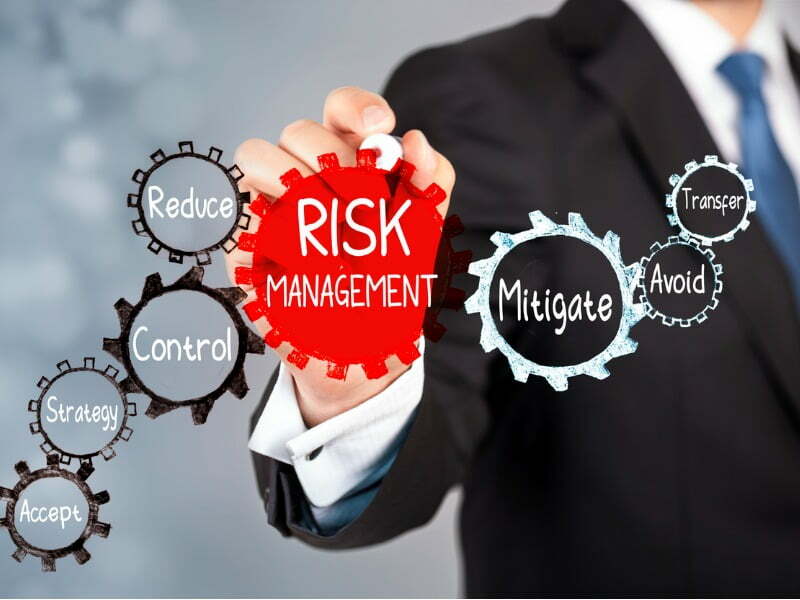
Investing money, time, and resources in marketing and advertising is crucial to the success of any business. Unfortunately, like any other investment, marketing has risks, which exist in different aspects, from production to promotion. These risks often harm a company’s brand and cause significant financial losses.
Luckily, with risk management and the right risk mitigation strategies, businesses can identify and minimize marketing risks. In this article, we discuss risk mitigation for marketing companies and explain 9 types of marketing risks to be aware of.
What Are Marketing Risks?
Marketing risks refer to the potential for losses and failures during marketing activities. This includes product development, pricing, sales, branding, and customer experience. With the advent of technology and the internet, marketing companies increasingly face numerous risks, especially when using data-driven marketing strategies.
According to the International Journal of Retail & Distribution Management, businesses that rely on consumer data to inform their marketing face more risks than those that don’t.
ADVERTISEMENT
Types of Marketing Risks
Knowing the various types of marketing risks can help your company identify and mitigate potential losses and failures in marketing activities. Here are 9 types of marketing risks to be aware of:
1. Brand Risk
Brand risk is the potential damage to a brand’s name, causing it to lose value and fail in the market. For instance, if your competitor adopts similar colors and product designs to your brand, customers will have difficulty distinguishing it. This causes your recognition to decline. Another example of brand risk is when there’s a significant gap between how a brand wants to be perceived and how they behave.
Brand risk is usually caused by stiff competition or ineffectiveness in marketing and promotion. You can manage it by adopting suitable risk prevention strategies. According to research, in 2021, brand risk dropped by 4% after marketing companies adopted sophisticated and brand suitability strategies like digital and web display.
2. Product Development
The product development phase presents a number of uncertainties that can cause a product’s launch or development to fail. According to recent studies, 75% to 95% of new product launches fail due to a lack of preparation when it comes to marketing. Most companies focus too much on manufacturing and forget to plan their marketing approaches until it’s too late.
3. Demand Risk
Demand risk is the potential of a loss due to a difference between forecast and actual demand. Businesses normally use forecasting tools to estimate the number of products they should produce. However, this demand can shift due to changing customer needs, preferences, and other external conditions, resulting in fewer sales.
4. Concentration Risk
Concentration risk stems from depending on a small group, region, or number of individuals for your revenue. For example, a company that generates 90% of its revenue from one particular area is susceptible to concentration risk. If there’s a shift in the region’s business cycle, it will directly impact the profitability of the business.
Concentration risk affects a company’s liquidity, capital and earnings. Experts recommend having adequate arrangements in place for actively controlling, monitoring, and mitigating concentration risk. These include conducting stress testing and sensitivity analysis to understand how certain changes may affect business profitability.
5. Price Risk
Price risk is the potential for a decline in the price of a commodity due to factors such as price wars, resulting in financial losses. According to Harvard Business Review, in today’s competitive business environment, brands are always fighting to offer the most affordable products to customers to win extra market share. This results in significant price cuts that may fall below your company’s costs. Unfortunately, price cuts cause many businesses to drop from the market.
6. Distribution Risk
Distribution risk comprises losses that may occur along the distribution channel. They include customer satisfaction issues, loss of partners and channel conflict. For example, resellers of your brand’s product may hike prices or provide poor customer service, damaging your reputation and image.
7. Operations Risk
Operations risks are the potential losses caused by flawed or ineffective policies, processes, and systems which disrupt business operations. For instance, a sorting error may hinder business continuity and prevent the fulfillment of orders. Alternatively, a company that relies heavily on automation and technology will be disrupted by a system hack or virus.
8. Reputation Risk
Reputation risk is the damage a business incurs when it fails to meet its customer’s expectations. For example, poor customer service negatively impacts brand reputation. According to studies, 27% of customers report ineffective service as their number one frustration.
9. Sales Risk
These are risks associated with the sales process due to consumer issues, product instability, and sales failures. They affect the amount of money your company brings in, impeding your bottom line. Many factors can cause sales failures, but 67% of lost sales are due to sales reps failing to properly qualify potential customers before beginning the sales process.
